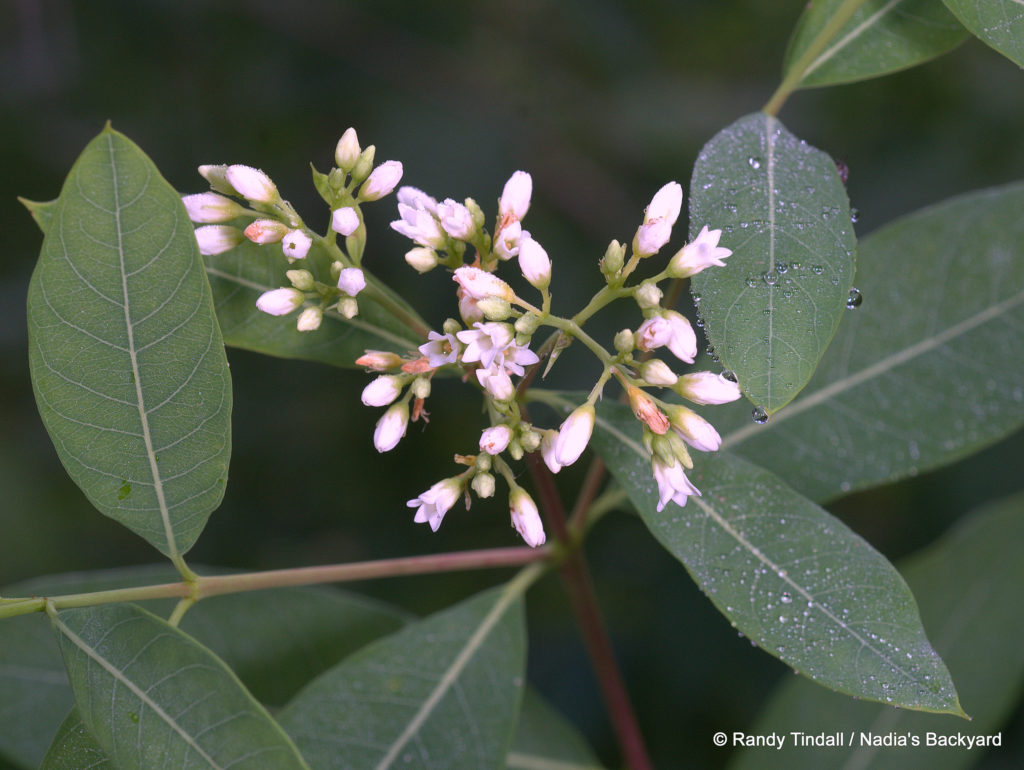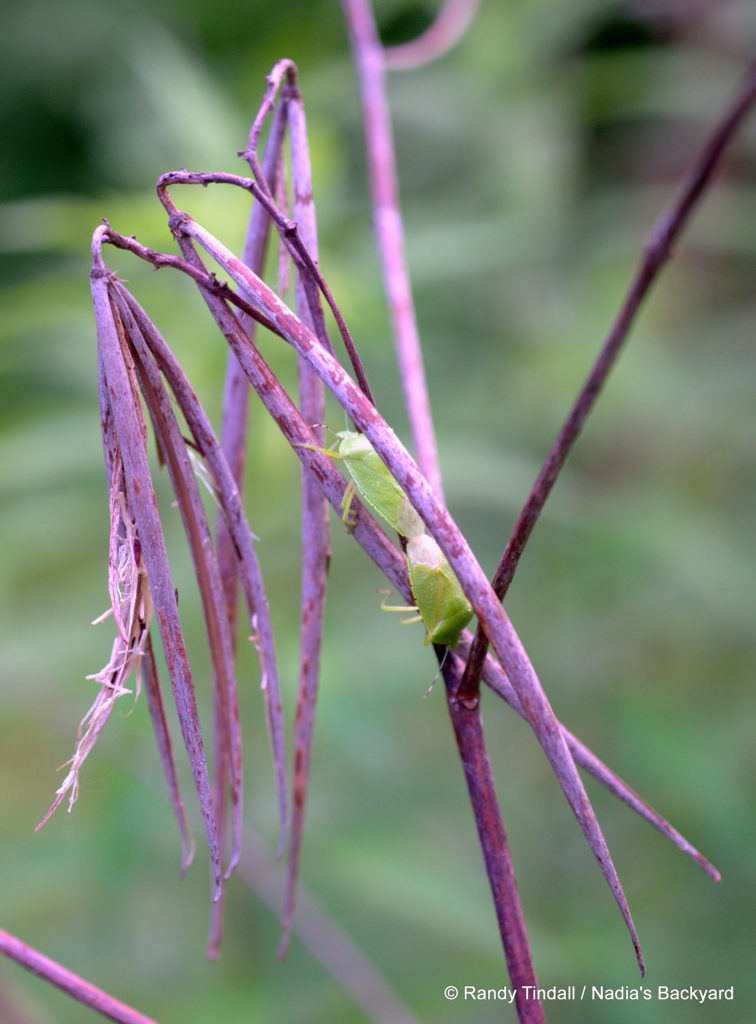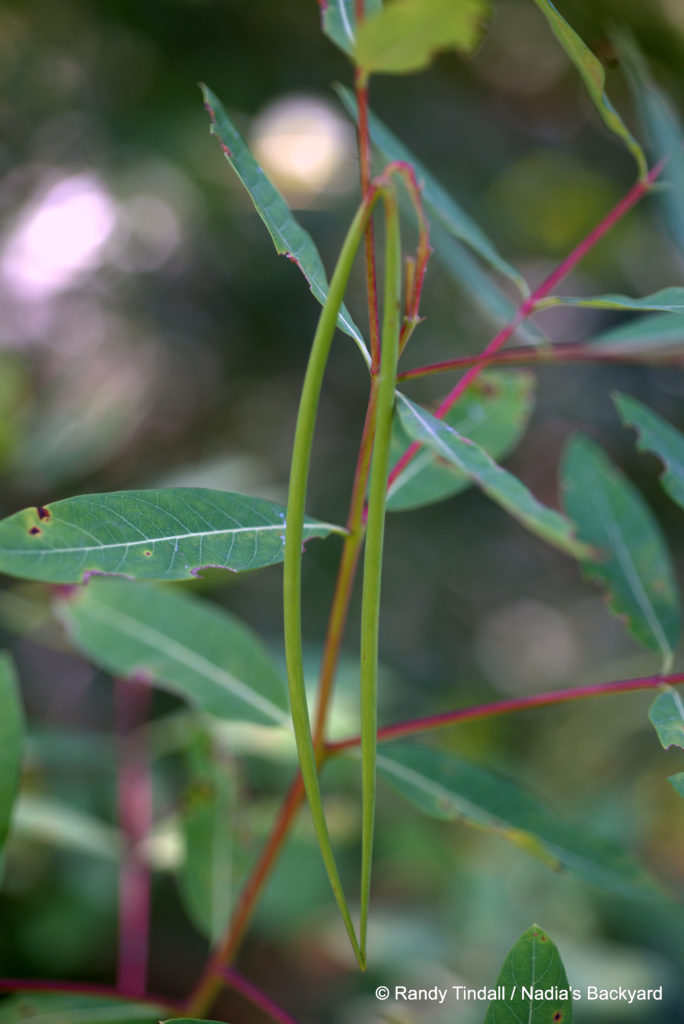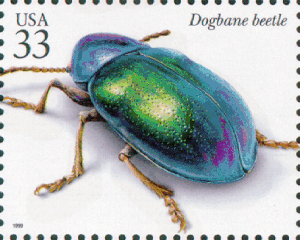
Our backyard dogbane manages to fool me just about every year, when winter is releasing its grip. and Nadia and I are eagerly scanning the ground for the green stuff popping up. Look! milkweed! Check for early monarch butterfly eggs!
It is otherwise very well-behaved and only fools me— Nadia knows dogbane right off when she sees it. But in fairness to me, a non-botanist, the two things can look amazingly similar when first coming up. They are, after all, closely related, with our friend getting the naming rights to the Apocynaceae (Dogbane!) family clan they both belong to.
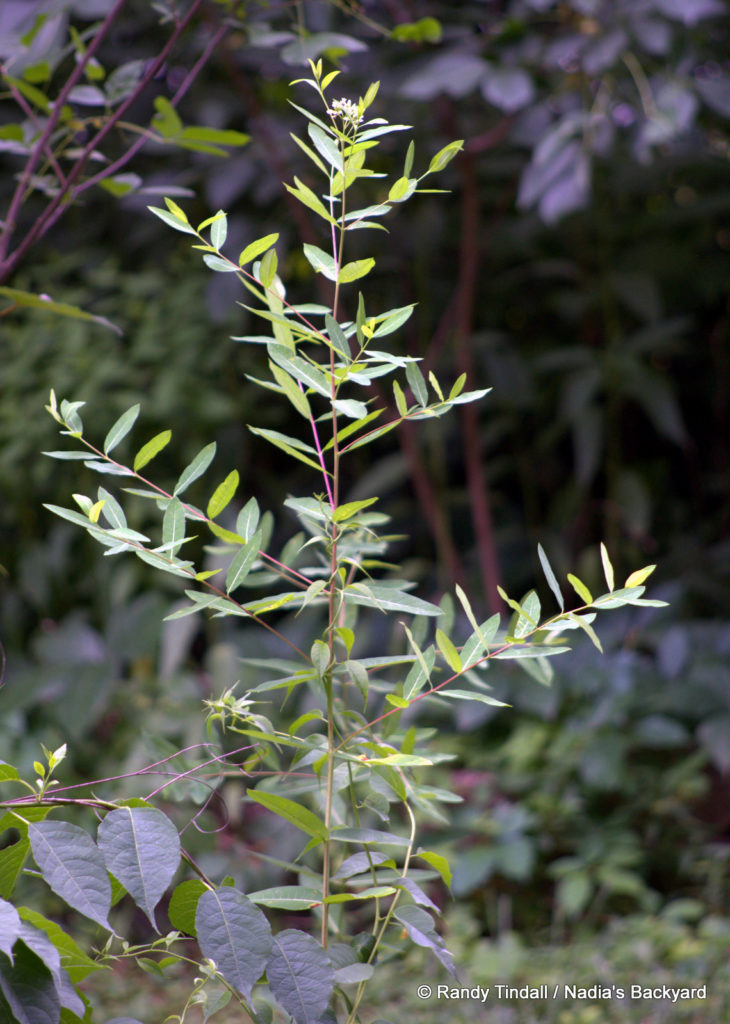
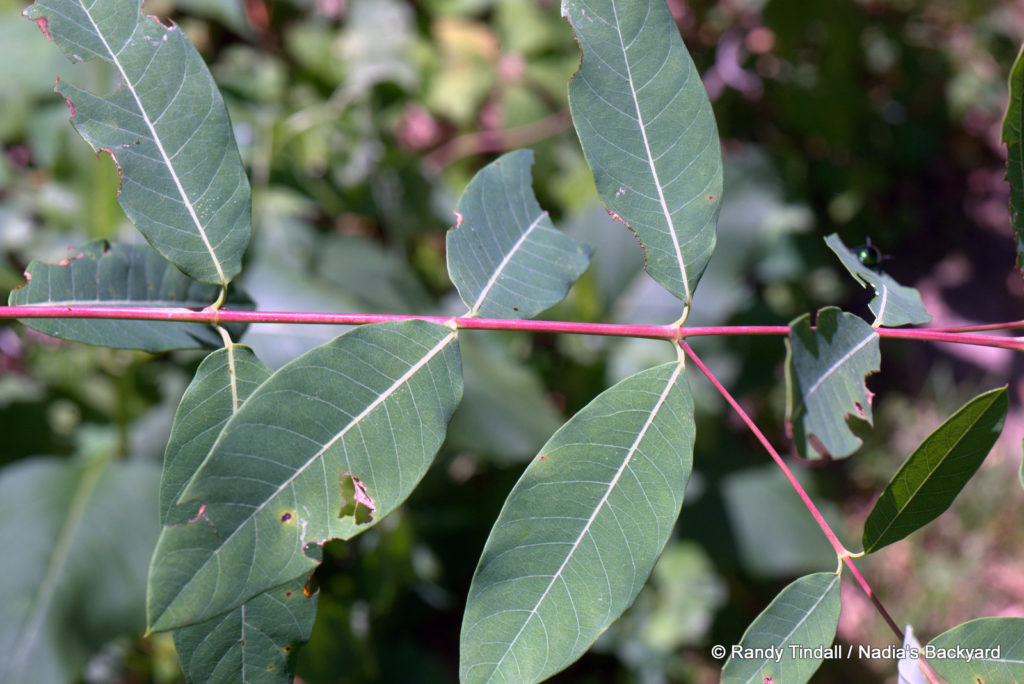
Common dogbane (Apocynum cannabinum) doesn’t cry out for attention. Its flowers are nice and lightly fragrant, but not super showy, appearing in little panicles from mid-summer into August. The small blossoms (2-3 mm wide) have large sepals and a five-lobed white corolla and bear some resemblance to those of milkweeds. They are complete with both pistils and stamens, and after pollination are replaced by pairs of long, narrow seedpods (follicles) that split open eventually along their sides to release silk-parachuted seeds to the mercy of the winds.
Dogbane’s growth habit is much more spindly-looking than the more robust stalks and leaves of the common milkweed (Asclepias syriaca) you’re most likely to meet. The stems are reddish in color and, like milkweeds, ooze a milky sap when cut or broken. (Careful with that, by the way, since reports have it that it can cause blisters and is toxic when ingested.)
The plants grows up to six feet tall, give or take, and sort of gangle out laterally as they mature. The pinnately-veined oblong-shaped leaves are opposite with smooth margins, about 2-4 inches long, sometimes sessile, sometimes with a short petiole. All in all, a pretty plant, but not one that stands up and shouts “Look at me!”.
In our yard, dogbane keeps to a fairly small area and minds its own business. Its favorite growing conditions include partial shade and moist soil, so ours stay close to our little water feature/rain garden in a place protected from strong sun by a large pin oak, a wafer ash and a couple other shade-providers during the brightest parts of the day. Our clayey Missouri soil seems to suit it fine and, although we don’t have a lot of them, the plants we have are happy ones.
So what is special about dogbane? Well, one thing is the company it keeps. Plain Jane/Jim it might be, but the brilliant jewel-like dogbane beetle that depends on it is definitely not. Chrysochus auratus is a standout of the beetle clan.
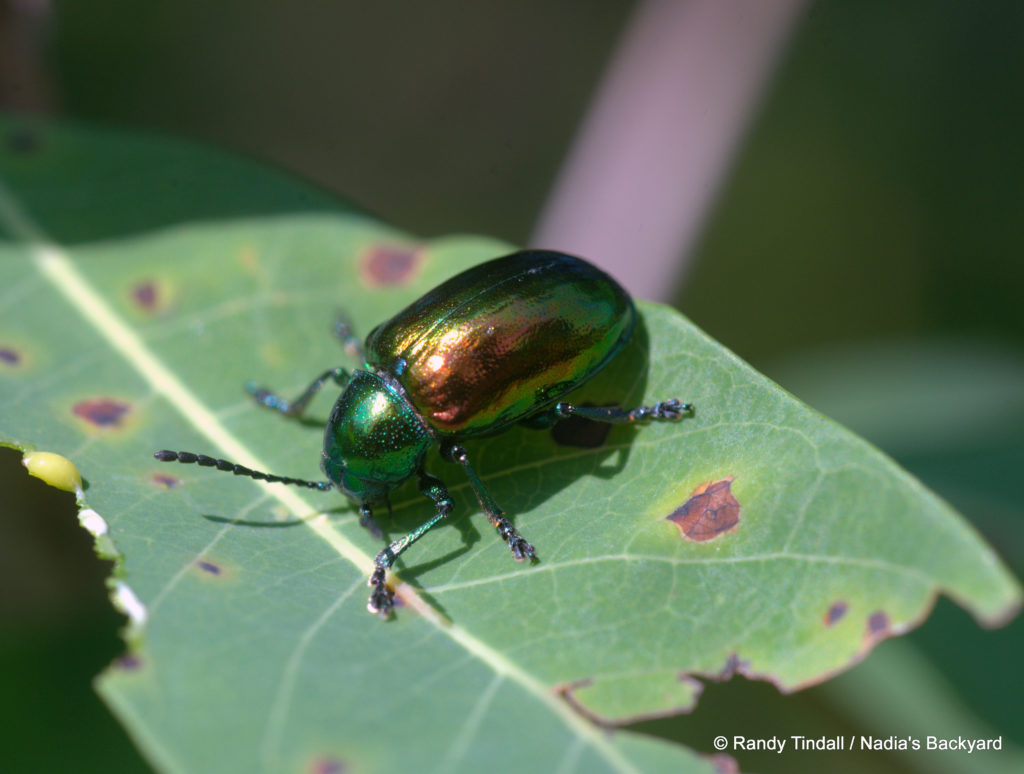
It even has its own postage stamp!
Other distinguished acquaintances of the dogbane are reported to be the caterpillars of the snowberry and hummingbird clearwing moths (Hemaris diffinis and thysbe), the six-spotted grey (Spargaloma sexpunctata) and the dogbane tiger moth (Cycnia tenera). It also attracts pollinating insects, which is a good thing in any yard or field.
So, aside from being a good neighbor and host to pollinators, what else can this plant do? Glad you asked. Its main claim to fame is as a source of very high-quality, strong fibers, which Native Americans and others have traditionally used for cordage to make everything from nets to bow-strings to carrying bags (hence the name cannabinum—hemp-like). These traditions survive today and in 2009 the Confederated Tribes of Siletz Indians in Oregon asked the state to stop spraying a section of highway which had served as a historically important harvesting point for dogbane to be used for fiber. In California, there is even a special Dogbane Reserve in Santa Rosa, to preserve both the plant and the cultural heritage around it. If you ever get the urge to trying making cordage yourself, here is a video primer and here is some information from the Pinoleville Pomo Nation which includes cordage-making.
Now, like a great many other plants, dogbane also has a long history of supposed medical uses, but first things first: all parts of this plant are toxic and can even be deadly, to both humans and livestock. (And if the word cannabinum caught your attention from the get-go, here’s a word to the wise—don’t even THINK about smoking it.) As Wildflower.org states it: “Warning: POISONOUS PARTS: All parts, fresh or dry. Highly Toxic, May be Fatal if eaten. Symptom: Cardiac arrest. Toxic Principle: Resins and cardiac glycosides.” So there.
Okay, that said, “Amerindians used berries and root in weak teas for heart ailments, diuretic. Induces sweating and vomiting; laxative. and as wash to prevent hair loss. Used in headaches with sluggish bowels, liver disease, indigestion, rheumatism. Chickasaws and Choctaws chewed fresh root, swallowing only juice as a specific for syphilis.” Chewing gum, too!
Another source says, “It is diuretic, diaphoretic, expectorant, tonic, anti-periodic, cardiac stimulant, alterative, antisyphilitic, and cathartic. Very useful in rheumatism, dropsy, dyspepsia, intermittent, syphilitic expressions, etc.”
My advice? Just don’t. Consider this to be interesting historical information and folklore and leave dogbane out of your diet altogether, whether for food or medicine.
Let’s just take this plant as another useful species for pollinators, admire its flowers, enjoy the dogbane beetles and clearwing moths it brings, make cordage from its dried stems, if you’re so inclined, and give it some room in your yard, fields, and native plantings.
We’re keeping ours.

